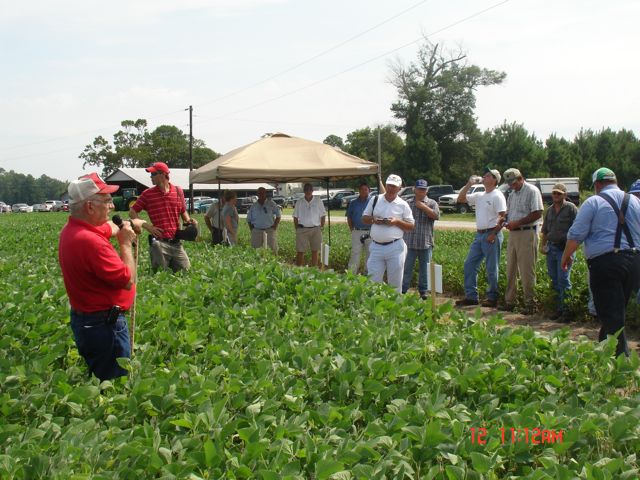Pest Avoidance Through Crop Management
go.ncsu.edu/readext?211414
en Español / em Português
El inglés es el idioma de control de esta página. En la medida en que haya algún conflicto entre la traducción al inglés y la traducción, el inglés prevalece.
Al hacer clic en el enlace de traducción se activa un servicio de traducción gratuito para convertir la página al español. Al igual que con cualquier traducción por Internet, la conversión no es sensible al contexto y puede que no traduzca el texto en su significado original. NC State Extension no garantiza la exactitud del texto traducido. Por favor, tenga en cuenta que algunas aplicaciones y/o servicios pueden no funcionar como se espera cuando se traducen.
Português
Inglês é o idioma de controle desta página. Na medida que haja algum conflito entre o texto original em Inglês e a tradução, o Inglês prevalece.
Ao clicar no link de tradução, um serviço gratuito de tradução será ativado para converter a página para o Português. Como em qualquer tradução pela internet, a conversão não é sensivel ao contexto e pode não ocorrer a tradução para o significado orginal. O serviço de Extensão da Carolina do Norte (NC State Extension) não garante a exatidão do texto traduzido. Por favor, observe que algumas funções ou serviços podem não funcionar como esperado após a tradução.
English
English is the controlling language of this page. To the extent there is any conflict between the English text and the translation, English controls.
Clicking on the translation link activates a free translation service to convert the page to Spanish. As with any Internet translation, the conversion is not context-sensitive and may not translate the text to its original meaning. NC State Extension does not guarantee the accuracy of the translated text. Please note that some applications and/or services may not function as expected when translated.
Collapse ▲ Although soybean is a crop of one plant species, differences caused by variety selection, planting date, cultural techniques, site, and season makes the crop highly variable in its attractiveness to insect pests. In other words, all soybean fields are not alike, as far as attracting and building-up pest insects is concerned. If these differences are recognized, the grower can actually plan to manage the crop for reduced insect pest numbers or, when this is not possible, they can predict which of fields are attractive and may need more attention to prevent yield loss. Also, pest insects in soybean fields are greatly reduced by beneficial insects. If these predators and parasites are not adversely affected by unnecessary insecticide use, they will provide the grower with a large measure of free insect control. Important tactics used to reduce insect damage include the following (the opposite of the described practices may lead to increased pest insect infestation):
Although soybean is a crop of one plant species, differences caused by variety selection, planting date, cultural techniques, site, and season makes the crop highly variable in its attractiveness to insect pests. In other words, all soybean fields are not alike, as far as attracting and building-up pest insects is concerned. If these differences are recognized, the grower can actually plan to manage the crop for reduced insect pest numbers or, when this is not possible, they can predict which of fields are attractive and may need more attention to prevent yield loss. Also, pest insects in soybean fields are greatly reduced by beneficial insects. If these predators and parasites are not adversely affected by unnecessary insecticide use, they will provide the grower with a large measure of free insect control. Important tactics used to reduce insect damage include the following (the opposite of the described practices may lead to increased pest insect infestation):
Site selection: Several insect and pathogen pests build-up if soybeans are not rotated, therefore, rotation helps insure reduced pest levels and improved crop health. Sites that have limiting pest, physical, or soil chemical problems should be avoided if these problems cannot be corrected.
Early planting: Planting before May 20 usually ensures that few late season caterpillars will develop in the field; however, some early planted fields may be more attractive to kudzu bugs, which are rare pests, and occasionally stink bugs.
Fertility and pH maintenance: Good growth might attract some pests, like corn earworm, but it also enhances the plant’s ability to compensate for damage. Reducing plant stress from low pH, poor fertility, or inadequate moisture will enable plants to tolerate insect feeding to a high degree.
Variety selection: If planted early, maturity Group V and earlier maturing varieties will bloom and harden-off before the corn earworm moth flight and, therefore, will be unsuitable for infestation. Also, early maturity can greatly reduce soybean looper, velvetbean caterpillar, and late stink bug infestations; in rare situations stink bugs can be trap cropped by early maturity fields.
Narrow rows (21″ or less): A complete canopy allows a higher level of biological control by insect predators, parasites, and diseases.
Avoiding unwarranted insecticide use: Both foliar sprays and Aldicarb used at-planting may reduce the build-up of beneficial insects and lead to more severe later season caterpillar infestations. Early-season insect pests rarely require insecticide and, if used, may produce more negative consequence by removing predators and parasites than benefits from insect control. In areas that have soybean looper and velvetbean caterpillar, spraying for corn earworm or stink bug may lead to high infestation by these later season pests. Therefore, avoiding unwarranted corn earworm treatments will tend to reduce other late season caterpillar numbers. Also, insecticide intended for corn earworm, but applied too early, can cause a severe corn earworm infestation. If early season (before corn earworm) spraying is necessary, a low rate of a caterpillar-specific insecticide (not a pyrethroid or acephate) will cause the least disruption to the important predators and will usually reduce beetles or worms (caterpillars) to below threshold if properly timed and applied.


